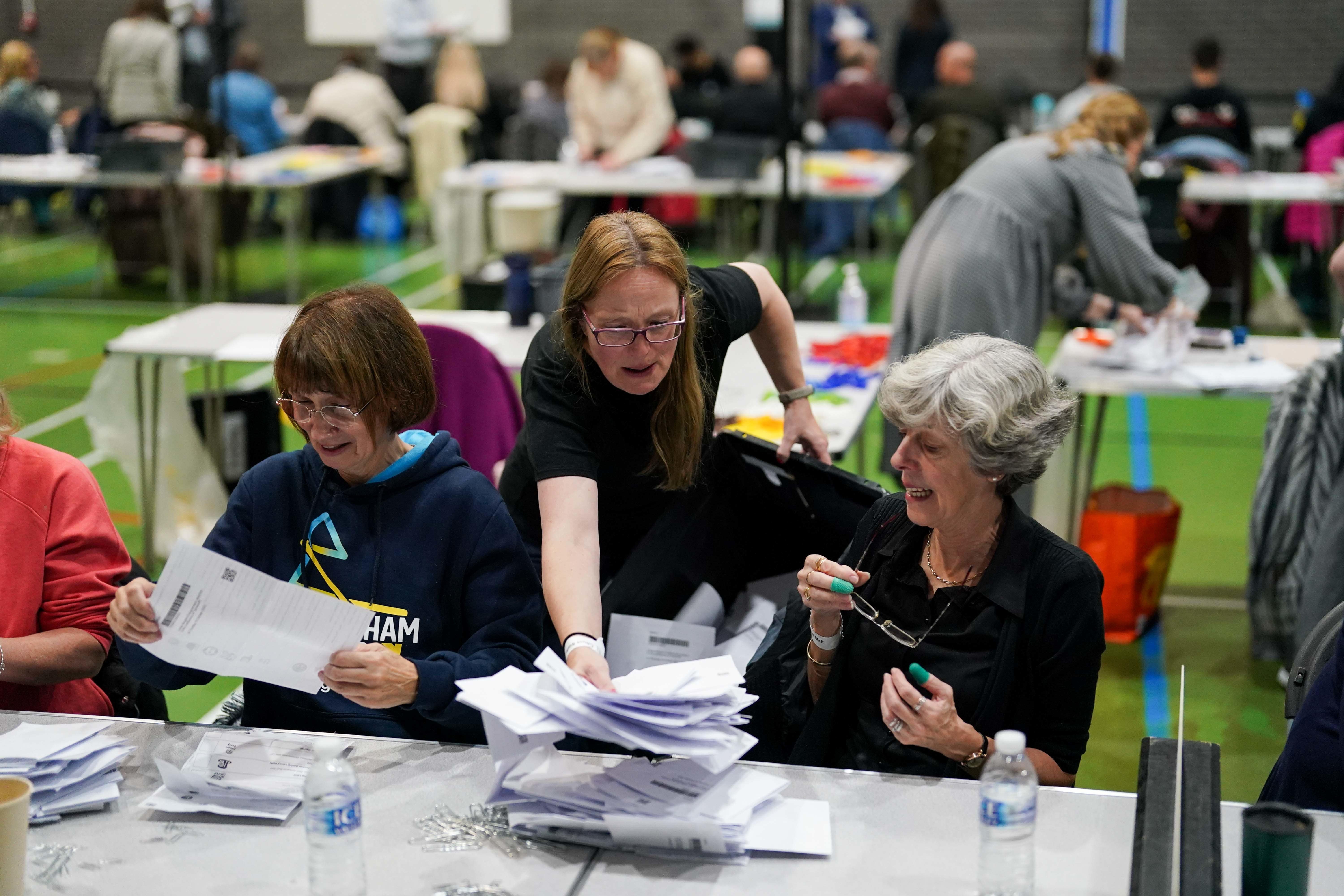Mid Bedfordshire and Tamworth results: Key statistics and historical benchmarks
The result in Tamworth represents the biggest Conservative majority overturned by Labour at a by-election since 1945.

Your support helps us to tell the story
From reproductive rights to climate change to Big Tech, The Independent is on the ground when the story is developing. Whether it's investigating the financials of Elon Musk's pro-Trump PAC or producing our latest documentary, 'The A Word', which shines a light on the American women fighting for reproductive rights, we know how important it is to parse out the facts from the messaging.
At such a critical moment in US history, we need reporters on the ground. Your donation allows us to keep sending journalists to speak to both sides of the story.
The Independent is trusted by Americans across the entire political spectrum. And unlike many other quality news outlets, we choose not to lock Americans out of our reporting and analysis with paywalls. We believe quality journalism should be available to everyone, paid for by those who can afford it.
Your support makes all the difference.Labour’s victories in Mid Bedfordshire and Tamworth have not only set new historical records – they also mean a total of 10 seats have changed hands at parliamentary by-elections in the past three years.
This is a level of churn not seen since the 1990s, when Sir John Major was prime minister and the Tories had clocked up almost 18 years in power at Westminster.
Here are some of the key facts and statistics from the results of Thursday’s by-elections:
– Mid Bedfordshire
Labour has made history by winning Mid Bedfordshire.
The result represents the largest numerical Conservative majority (24,664) to be overturned by the party at a by-election since 1945.
The seat has existed since 1918 and had elected Tory MPs continuously since 1931 – until now.
To win Mid-Bedfordshire, Labour needed a swing in the share of the vote of 19.1 percentage points.
In other words, a net change of 20 in every 100 people who voted Conservative in 2019 needed to switch sides to Labour.
They managed a swing of 20.5 points, almost matching the 20.4 point swing the party achieved at the Rutherglen & Hamilton West by-election earlier in October, when they won the seat from the SNP.
The Conservative share of the vote in Mid Bedfordshire fell from 38% at the 2019 general election to 31%, while Labour jumped from 22% to 34%.
The Liberal Democrats also improved on their performance in 2019, increasing their vote share from 13% to 23%.
Both Labour and the Lib Dems had presented themselves as the main challenger to the Conservatives in Mid Bedfordshire and such a three-way contest was always likely to deliver a close result.
– Tamworth
To win Tamworth, Labour needed a swing in the share of the vote of 21.4 percentage points: the equivalent of a net change of 22 in every 100 people who voted Conservative at the 2019 general election switching sides.
In the event, they pulled off an even bigger swing of 23.9 points: high enough to rank as the second-largest swing recorded by Labour at a by-election since 1945.
The largest was 29.1 points at the Dudley West by-election in December 1994.
The Conservative majority overturned by Labour in Tamworth was 19,634: smaller than in Mid Bedfordshire, but still a sizeable number.
The Tories’ share of the vote dropped sharply from 66% at the 2019 general election to 41%, while Labour’s share rose from 24% to 46%.
The Liberal Democrats finished in seventh place, behind a variety of parties including Reform and the Greens.
This is a very different outcome from their third-place finish in Mid Bedfordshire and suggests a degree of tactical voting might have occurred, with some Lib Dem supporters possibly voting Labour, having concluded that Labour had the best chance of defeating the Conservatives.
The outcome in Tamworth has an intriguing parallel with a by-election in the 1990s.
Before 1997, this area of the country was represented by the constituency of South East Staffordshire.
A by-election took place in South East Staffordshire in April 1996, roughly one year ahead of a general election.
Then, as now, the Conservatives went into the contest defending a large majority.
And then, as now, Labour won the seat on a huge swing: 22.1 percentage points, very close to the 23.9 point swing they achieved in Tamworth on Thursday.
Of the 10 seats to have changed hands at parliamentary by-elections in the past three years, eight of them involved swings of 20 percentage points or higher, a pattern that is unprecedented in recent political history.
Five of these eight swings have occurred in the past four months: Selby & Ainsty (23.7 points from Conservatives to Labour) and Somerton & Frome (29.0 points from Conservatives to the Liberal Democrats) in July; Rutherglen & Hamilton West (20.4 points from the SNP to Labour) earlier this month, and now Mid Bedfordshire (20.5 points) and Tamworth (23.9 points), both from Conservatives to Labour.
The others were Tiverton & Honiton (29.9 points) in June 2022, North Shropshire (34.1 points) in December 2021, and Chesham & Amersham (25.2 points) in June 2021, all from the Conservatives to the Liberal Democrats.
The remaining two seats to have changed hands at by-elections in the last three years are Wakefield, gained by Labour from the Conservatives in June 2022 on a swing of 12.7 points; and Hartlepool, gained by the Tories from Labour in May 2021 on a swing of 16.0 points.